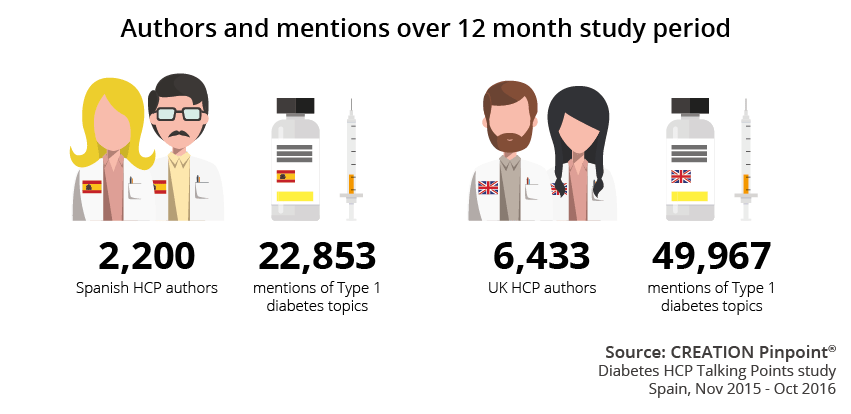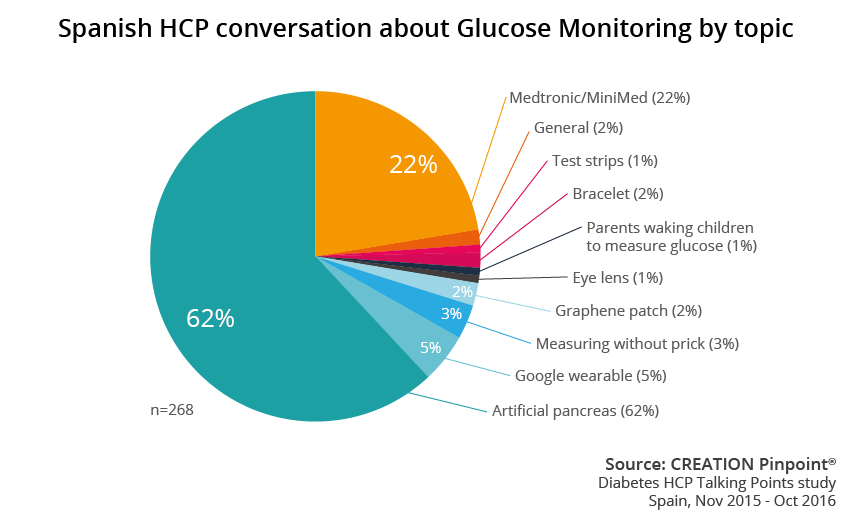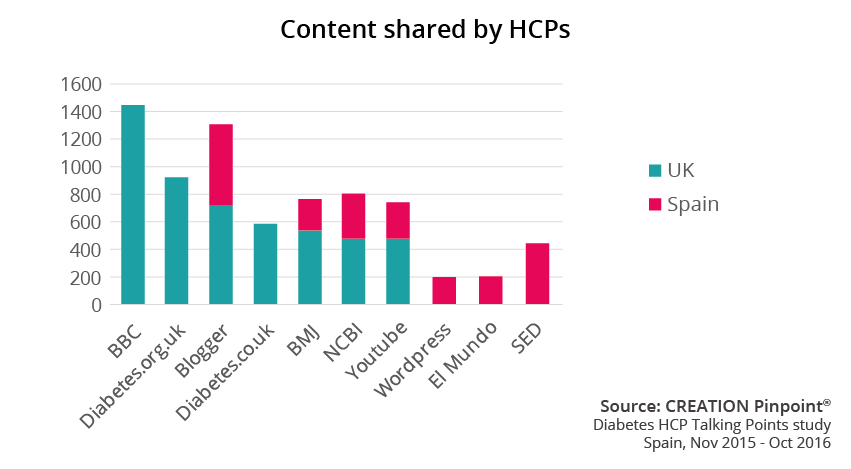To read in Spanish follow here.
Sometimes local market insights for effective pharma messaging are driven by a desire to create efficiencies in channel management or content production across a region, but more often than not, this request reflects a real desire to respond to the needs of local HCP customers – to become more targeted, not less.
Although it’s true that we do see some synergies in HCP online behaviours across the major European markets (for example, in broad terms, we see HCPs discussing therapy areas online in every market; we see HCPs sharing content; in most markets we see collaboration with peers), our analysis always reveals local nuances. Understanding these nuances in HCP opinion and digital behaviours can help country brand teams to respond quickly to their local digital environment, and regional teams to plan and prioritise both messaging and resources.
Local Market Pharma Insights
We found these nuances were exemplified in a recent CREATION study into HCP online conversation about Type 1 Diabetes. The study examined conversation in both the Spanish and UK markets. Both markets had a highly engaged set of HCPs talking about Type 1 Diabetes online:

Authors in both markets used Twitter extensively, and engaged with peers and patients to share resources and articles.
But what was more striking for our analyst team was not these similarities, but rather the differences that they saw in the two markets when taking a more in depth look at the data.
Spanish Pharma Insights
When exploring the key topics discussed amongst HCPs in the Spanish market, we identified three clear themes: insulin therapies, approaches to measuring glucose, and managing the risks that Type 1 Diabetes posed to children. The first two themes were very much focussed on treatment, products and devices. In the ‘insulin therapies’ category, 28% of mentions related to specific products. In the ‘glucose measurement’ category, 22% of HCP conversation related to one device, Medtronic’s ‘Mini-med’, and 62% related to the development and use of the artificial pancreas more generally.
Según Novo Nordisk, Tresiba (insulina degludec) es más segura que Lantus (insulina glargina).: https://t.co/CPwpv88iBg vía @pmlivecom
— José Luis Jordana (@joseljordana) May 30, 2016

UK Pharma Insights
Compare this to conversation amongst UK HCPs, and we see a marked difference; rather than focussing on treatment, the topics most discussed by UK HCPs were patients, and health systems – specifically, the NHS.
When discussing patients, a particular concern amongst UK HCPs was how to best support younger Type 1 patients. HCPs in the UK market not only shared resources relating to patient care and advocacy, but also went as far as to develop their own resources to share – something that we did not see in the Spanish study.
Another key topic of conversation amongst UK HCPs was the NHS, with HCPs retweeting positive experiences shared by patients receiving support from the NHS.
@ProtocoIDriven 53yr old type1 diabetic: no amputations, kidney failure etc! Why? Because of our NHS! BORN in the NHS! Alive because of it😊
— Liam Wolfhound's Son (@LJMcCann) December 9, 2015
The tweet above was shared by 3 UK HCPs, and the tweet below was shared by 8 UK HCPs. We saw many similar examples of this type of sharing of patient content by HCPs in the study. It is interesting to consider how patient content can influence HCP views, and how interactions between patients and HCPs can create a commentary on an issue like NHS service provision.
#IAmThePatientWho can still smile, laugh, live &love despite all my complex health issues & #T1D complications because the #NHS care
— Kate James 💫 (@kookyK8) February 10, 2016
To find out more about the Type 1 Diabetes topics that were of most interest to Spanish and UK HCPs, please take a look at the full reports – but whatever therapy area you focus on, gaining a good understanding of the issues that are important to local HCPs in context will help you to design messaging that really resonates with your customers.
Local digital behaviours
As well as understanding the issues that most interest local HCPs in relation to your therapy area, it can also be helpful to understand local digital behaviours. For example, in the Type 1 Diabetes study, HCPs in both markets shared content from medical bodies, national media and journals, as well as blogs and content created by other HCPs.

Although it is useful to know which sites are most shared, there is another insight here; in Spain, we see a higher level of sharing from social sites such as Blogger and Youtube, whereas in the UK, a mainstream news website (BBC) was by far the most shared by HCPs.
Conclusion
It’s worth considering what pharma insights like this could tell us about how HCPs in these two markets like to produce and consume content, and what this could mean for our own strategies for effectively reaching these markets. In this case, a strategy focussed on building media partnerships might work well in one market, whereas a more collaborative approach around content creation might work better in another.
Whatever market we’re studying, we always encourage our clients to understand the local picture, as well as the regional context. These local insights can form the basis of customer engagement that avoids the pitfalls of addressing an amorphous ‘target market’, and instead, empowers companies to recognise and respond to HCPs as real people delivering healthcare in a real settings. To discover what you could learn from HCPs online, get in touch and tell us what you would like to know.
The header image was sourced from Flickr user Rick Ligthelm, under creative commons licence.

